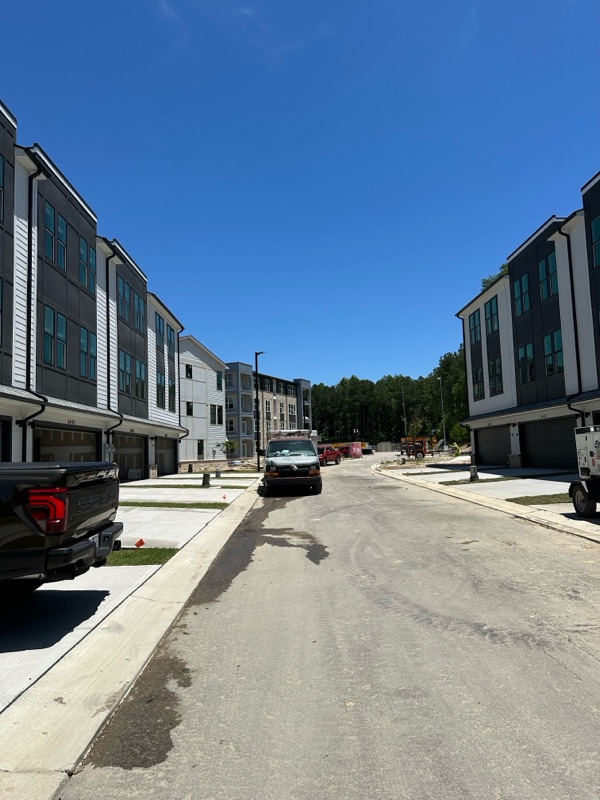Housing Market Trends: How the Shift to Multifamily and Build-to-Rent Impacts Developers and Investors

The U.S. housing market continues to evolve, and 2024 marked a significant shift in construction trends. While total housing starts surpassed 1.37 million for the 11th consecutive year, developers are increasingly focusing on multifamily and build-to-rent (BTR) properties. This shift could present major opportunities for investors and developers looking to capitalize on changing demand.
According to data from Colliers, HUD, Zillow, Freddie Mac, and Green Street, the supply-demand balance is shifting, with implications for both rental and for-sale housing markets.
Key Takeaways for Developers and Investors:
• Multifamily completions hit 588K units in 2024—the highest since 1974—yet multifamily starts dropped 36% from their 2022 peak.
• Single-family home starts rose 6% year-over-year (YoY), exceeding 1 million units, but this could contribute to rising unsold inventory as affordability remains a challenge.
• The U.S. housing supply gap is estimated to be between 3.4M and 3.7M units, keeping pressure on demand for rentals.
• High home prices and mortgage rates continue to push more Americans into renting, creating strong tailwinds for multifamily and BTR investments.
Multifamily: A Temporary Supply Surge, Then Stabilization
In 2024, multifamily unit completions surged to 588K, flooding the market with new supply. However, multifamily housing starts fell sharply to just 337K units—a 36% decline from 2022.
This shift means that while the rental market is currently absorbing a surge of new units, the pipeline for future multifamily projects is slowing. For multifamily property owners, this could be a turning point for rental pricing power, allowing rents to stabilize or increase after a period of oversupply-driven declines.
For developers, the takeaway is clear: With fewer new multifamily projects in the pipeline, existing properties may see lower vacancy rates and healthier rent growth in the coming years.
Single-Family Market: More Inventory, But Less Affordability
The increase in single-family home starts could create new challenges. Despite rising inventory, affordability issues persist. Only two U.S. metros currently offer cheaper homeownership than renting, according to Realtor.com, and this affordability gap is projected to widen further in 2025 (Redfin).
Mortgage rates and high home prices are pushing potential buyers toward renting, which could benefit single-family rental (SFR) investors. Additionally, if traditional homebuilders struggle to offload inventory, they may turn to institutional buyers and BTR operators to stabilize returns.
For developers, the risks include rising unsold inventory and higher holding costs. Since the pandemic, commercial construction costs have risen by over 40%, making it even more difficult for developers to hit profitability targets on new single-family homes. SFR investors may be well-positioned to acquire excess inventory at discounts, expanding rental portfolios in the process.
Big Picture: A Market in Transition
Despite these shifts, the broader housing market remains deeply undersupplied. Zillow estimates a 3.4M-unit shortage, while Freddie Mac places the deficit at 3.7M.
In the near term, multifamily and build-to-rent owners appear to be in a strong position as affordability pressures drive more renters into the market. However, long-term stability will depend on renter financial health and economic conditions—particularly as rental prices adjust to shifting supply and demand.
For real estate developers and investors, the key themes for 2025 will be:
✅ Strategic acquisitions—especially in the BTR and SFR space as affordability pushes more people into renting.
✅ Navigating supply fluctuations—adjusting investment strategies based on the slowdown in multifamily starts.
✅ Watching interest rate movements—which could dictate whether single-family inventory clears or gets absorbed into the rental market.
As housing market dynamics evolve, the best opportunities will be found in staying ahead of demand shifts and strategically positioning assets for long-term growth. Whether in multifamily, SFR, or BTR, the next few years could define new investment strategies for developers and investors looking to capitalize on shifting trends.
Comments
Post a Comment